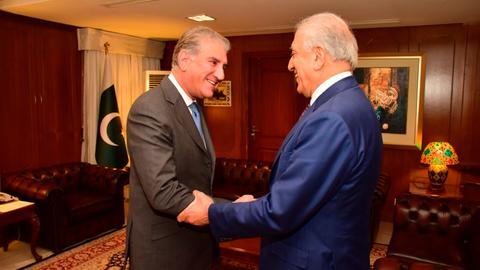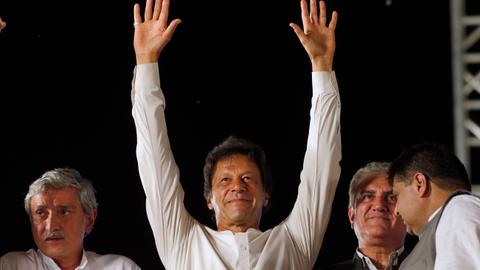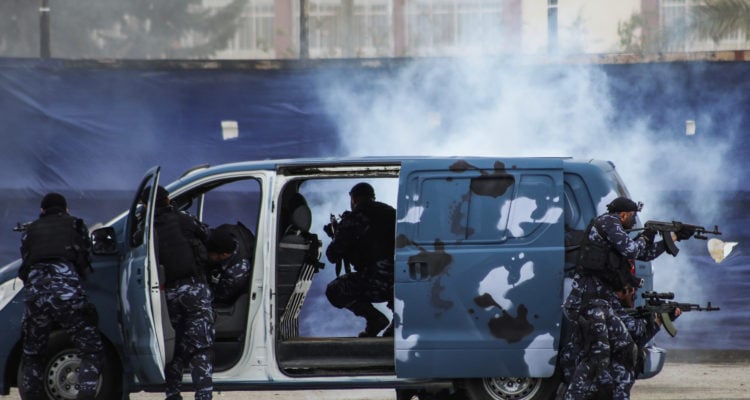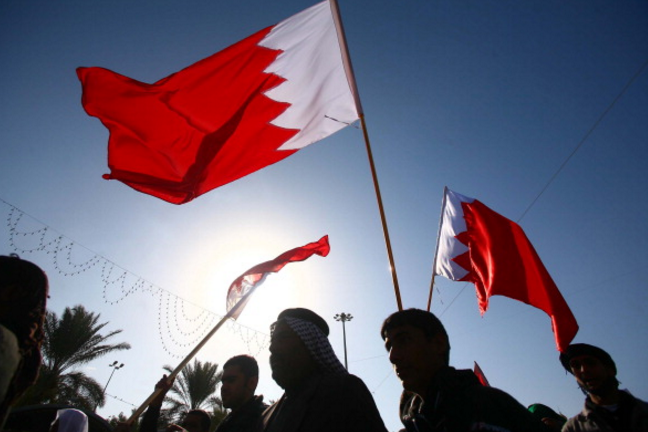In the 2018 election, Imran Khan campaigned on a consistently pro-Iranian platform, vowing to improve Pakistan’s relations with its western neighbour, but since taking office, he has seemingly done the opposite, strengthening his country’s alignment with Saudi Arabia, Iran’s nemesis.
Khan’s first overseas trip as prime minister was to Riyadh, and Pakistan welcomed Saudi crown prince Muhammad Bin Salman for a magnificent state visit in February. By contrast, Khan has only just concluded his first trip to Iran (delayed from January for unspecified reasons), while the Iranian president is yet to visit Islamabad.
This should come as no surprise. Pakistan’s relationship with Riyadh is close and goes back decades. Its army helped establish the Saudi military, and, by the end of the Cold War, around 15,000 Pakistani troops were stationed in the kingdom. Defence ties have remained firm, with joint exercises and training, and in 2017 former Pakistani army chief Raheel Sharif was appointed to head the Saudi-led Islamic Military Counter Terror Coalition.
Economic links are also strong: Saudi Arabia is Pakistan’s top oil supplier, and there are around 2.5 million Pakistani expatriate workers in the kingdom. As Islamabad grapples with another balance of payments crisis, Riyadh has stepped in to provide support, offering a $6 billion emergency loan last year. In February, the crown prince pledged $20 billion of investments, and Saudi Aramco has reportedly offered liquid natural gas.
However, Pakistan’s ties with Iran are historically much deeper. There were close interactions between the Safavid and Mughal empires, for example, with the latter making Persian its official language. According to the book Pan-Islamic Connections, edited by Christophe Jaffrelot and Laurence Louer, Persia was more critical to the development of Indian Islam than the Gulf, which only became influential in the post-war era when oil wealth enabled Arab states to disseminate their hardline interpretation of Sunni Islam.
Today linguistic and religious ties persist between Iran and the Subcontinent. There are many Farsi words in Urdu, and the Pakistani national anthem is almost entirely in Persian.
Moreover, while Pakistan is a majority Sunni state and Iran overwhelmingly Shia, the former has a sizeable Shia minority that could be as high as around 20 percent of the population. Prominent Pakistanis such as the country’s founder, Muhammad Ali Jinnah, and its first president Iskander Mirza, were Shia Muslims.
As Alex Vatanka explains in his book Iran and Pakistan, the two countries had good relations during the early Cold War. Iran was not only the first nation to recognise Pakistan, but its ruler, the Shah, was also the first head of state to visit, and both countries allied themselves with the US against the Soviet Union.
Although bilateral relations became more complicated after the 1979 Iranian revolution, the two continued to cooperate, for example in Afghanistan where both supported the mujahideen during the anti-Soviet war.
As the Saudi-Iran rivalry intensified in recent years, Pakistan has made a determined effort to remain neutral. Islamabad opposed Saudi-backed plans to attack the Syrian government in 2013 and criticised US airstrikes against the Assad regime in 2018.
In 2015, Pakistan’s parliament voted not to send Pakistani troops to fight in the Saudi-led war in Yemen. When tensions between Riyadh and Tehran escalated following Saudi Arabia’s execution of a Shia cleric in 2016, Pakistani officials conducted shuttle diplomacy to mediate between the two.
Iran-Pakistan relations have certainly warmed. Kashmir now appears in the Iranian supreme leader’s speeches, and Iranian posters commemorated Pakistan’s independence day last year. Imran Khan has long advocated closer ties with Tehran. His PTI party supported the 2015 Iran nuclear deal, opposed deploying Pakistani troops to Yemen, and also opposed the appointment of General Sharif to head the Islamic counter-terrorism coalition because it could affect Pakistan’s relations with Iran.
Since taking office, the exigencies of economic crisis have forced Khan to embrace Saudi support. But he has not yet allowed Riyadh’s growing leverage to derail the Pakistan-Iran relationship.
In April, Islamabad expressed goodwill towards its neighbour by donating aid to the victims of Iran’s floods. And his visit to Iran this week was amicable and productive. Indeed, the fact Khan visited Tehran at all speaks volumes about the resilience of bilateral ties, given how much money his government is receiving from Riyadh.
During the trip, Khan and Iran’s president, Rouhani agreed to set up a joint security force to police the troubled border, which has seen repeated terrorist attacks launched by groups allegedly hiding on either side of the frontier.
In February, militants bombed a bus in Iran, killing 27 members of the Iranian Revolutionary Guards Corps. And, in April, Baloch separatists murdered a busload of Pakistanis. Islamabad also believes that India uses Iranian territory to launch hostile intelligence operations against Pakistan.
Tehran and Islamabad regularly blame one another for harbouring terrorists, but the mood during Khan’s visit was conciliatory. He even went so far as to admit that militants operated from Pakistani Balochistan, prompting outrage back home. And, just as he arrived, the Iranian supreme leader dismissed IRGC chief, General Jafari, a particularly vociferous critic of Pakistan. While Jafari’s dismissal was probably related to other factors, the timing was revealing.
While these sorts of goodwill gestures are primarily symbolic, Pakistan-Iran cooperation is more substantive in the case of Afghanistan. The two have been involved in negotiations to end the war there, jointly participating in the Kabul Process, signing the Tashkent Declaration in 2018, or sitting down with the Taliban in Moscow late last year. And the spy chiefs of Iran, Pakistan, Russia and China held an unprecedented meeting in Islamabad last year to discuss terrorism and Afghanistan.
However, there are clear limits to collaboration. Despite promises to boost bilateral trade to $5 billion, trade volumes are still far below their potential. Plans to introduce a ferry link from the port of Gwadar to Chabahar have not materialised, and railway connectivity between Iran and Pakistan is woefully poor. A gas pipeline from Iran to Pakistan has been in the works for decades but remains incomplete.
Iran claims to have constructed its segment, but Pakistan is dragging its feet, apparently due to American and Saudi pressure. And now, with US sanctions on Iran renewed after Trump withdrew from the nuclear deal last year, and Pakistan currently in need of American backing to secure another IMF loan, Washington has even more leverage than before. So, progress on trade is hard to imagine at this moment.
Iran has expressed interest in joining CPEC, but potential Saudi investment in an oil refinery at Gwadar may well prevent any Iranian involvement. On the military front, despite occasional exercises and a recent proposal to jointly produce defence equipment, there is nothing to write home about.
The fact remains that, however affectionate Pakistan’s relations with Iran may seem, they are far less concrete than its ties to the Gulf.
But that does not mean Pakistan will get sucked into a Saudi-Iran Cold War. Recent history shows that Islamabad has managed to remain neutral even when its links to Riyadh have been strong.
In the 1980s, for example, when General Zia cultivated an especially close bond with Saudi Arabia, Pakistan stayed neutral in the Iran-Iraq War and even supported the Iranians. Then, in 2015, prime minister Sharif – who lived in exile in the kingdom and has particularly close personal ties to the Gulf – stayed out of the Saudi war in Yemen.
Furthermore, Saudi Arabia may be prepared to tolerate a working relationship between Pakistan and Iran, given that it has itself formed closer ties with India in recent years.
As was written in RUSI last year, “Saudi Arabia and Pakistan are interested in an interdependent security relationship, one which does not infringe on either’s relations with other countries.”
While Islamabad may eventually be forced into choosing sides, it is not a foregone conclusion. Pakistan has never been a Saudi puppet.
Disclaimer: The viewpoints expressed by the authors do not necessarily reflect the opinions, viewpoints and editorial policies of TRT World.
We welcome all pitches and submissions to TRT World Opinion – please send them via email, to opinion.editorial@trtworld.com















